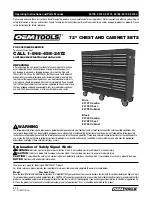
Stable Operation
Quality of Service (QoS)
●
QoS
The performance of a high priority server is guaranteed by configuring the performance limit of each
connected server.
When the load from one application is high in a storage integrated environment and sufficient resources to
process other operations cannot be secured, performance may be reduced.
The QoS function guarantees performance by limiting resources for applications with a low priority so that
resources are secured for high priority applications.
Sixteen priority levels of bandwidth limits (maximum performance limits) can be configured on the hosts,
CA ports, volumes, and LUN groups. The performance configuration patterns of the bandwidth limit can be
individually changed via ETERNUS Web GUI or ETERNUS CLI.
In addition, scheduled operations (when setting a bandwidth limit for hosts, CA ports, and LUN groups) are
possible by setting a duration using ETERNUS CLI.
Linking with ETERNUS SF Storage Cruiser significantly reduces the operation workload on the system
administrator when applying the QoS function because performance designing and tuning are automatically
performed.
Figure 62
QoS
ETERNUS AF
Server B
High priority
Server A
Low priority
Affects the performance of B
I/O performance
High
I/O performance
High
Server A
Server B
Processing requests
from A increase
Required performance for A
Required performance for B
Server A
Server B
The workload does not exceed
the upper limit even when
processing requests from A
increase
Workload upper limit for A
Workload upper limit for B
Because the workload for A, which has a low
priority, significantly increases, the required
performance for B cannot be maintained
Because the workload for A is lower than
the upper limit, the workload for B, which has
a high priority, can be reduced
When QoS is not applied
When QoS is applied
2. Basic Functions
Stable Operation
109
Design Guide
Содержание ETERNUS AF S3 Series
Страница 204: ......
















































